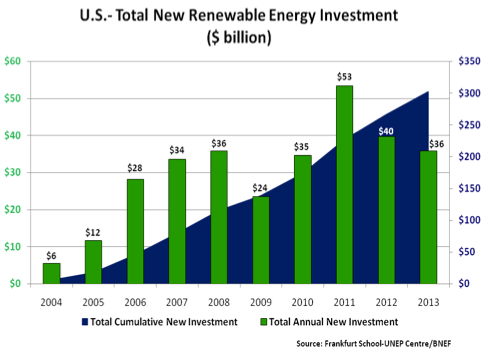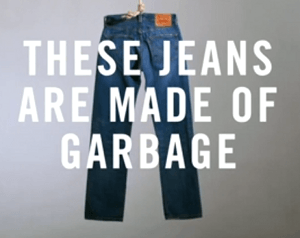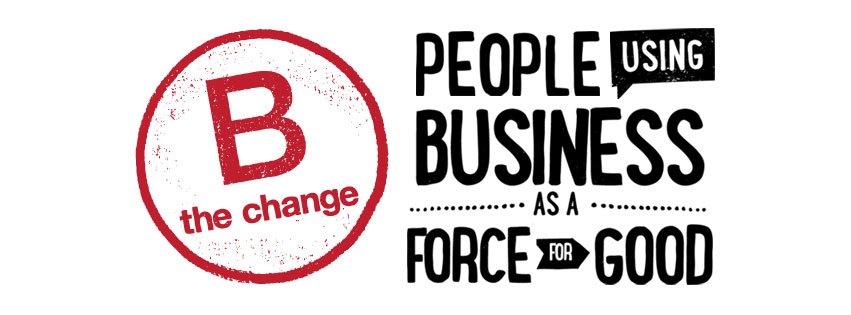3p Interview: Brad Molotsky, Executive Vice President, Brandywine Realty Trust


Every Wednesday, TriplePundit takes 30 minutes or so to chat with an interesting leader in the sustainable business movement. These chats are broadcast on our Google+ channel and embedded via YouTube right here on 3p.
On Wednesday, April 30th, Nick Aster hosted a live Google Chat with Brad Molotsky. Brad is the Executive Vice President, General Counsel and Secretary of Brandywine Realty Trust, a NYSE listed real estate investment trust, and is the co-creator of the Brandywine Environments sustainability initiative. Brandywine specializes in the ownership, management, leasing and development of class-A commercial office properties in selected markets throughout the United States, owning and managing over 36 million square feet of office product.
During this Google Chat interview, Brad told us about the specific ways he's incorporating Brandywine's sustainability goals into the business and how this work pays off. We learned about industry-wide organizations like the Real Estate Roundtable, what can be accomplished by partnering with others, what’s been achieved, and what the future holds.
If you missed the conversation, you can watch it right here or on our YouTube channel. Feel free to reach out to Brad on Twitter at @BMolotsky.
About Brad:
Brad A. Molotsky is the Executive Vice President, General Counsel and Secretary of Brandywine Realty Trust a NYSE listed, real estate investment trust, and is the co-creator of the Brandywine Environments sustainability initiative. He joined Brandywine as General Counsel and Secretary in October 1997.
Mr. Molotsky is a member and leader of National Association of Real Estate Investment Trusts, the National Association of Office Properties, the Urban Land Institute, the Delaware Valley Green Building Council, and the Sustainability Roundtable, Inc. He also serves on the Advisory Boards of the Greater Philadelphia Energy Efficiency in Buildings Innovation Cluster and Keep America Beautiful. Mr. Molotsky has testified in front of the US Senate Energy Committee on energy efficiency issues in 2012 and 2013 and has been invited to testify in front of the US House Energy Committee on energy efficiency issues. He is a frequent lecturer for the American Law Institute, NAIOP, ULI, and the American Bar Association w Institute, NAIOP, ULI, and the American Bar Association.
Mr. Molotsky received a B.S. in Accounting from the University of Delaware graduating cum laude and an MBA/JD from Villanova University’s School of Law and the College of Business and Finance with cum laude distinction. Mr. Molotsky is happily married with three children ranging in ages from 19 to 13.
TODAY: Twitter Chat with Heineken: What Does It Mean to Brew a Better Future?


Join TriplePundit and CSRwire at #BaBF for a live Twitter Chat with HEINEKEN on April 30, 2014 at 8am PST / 11am EST / 5pm CET
We're thrilled to announce another live twitter chat in partnership with CSRwire on April 30 featuring Heineken in conjunction with the release of the company's latest sustainability report.
Heineken proclaims that sustainability has been an integral part of business operations throughout its 150-year history. Now, in 2014, the beer giant's commitments are coming to life through its Brewing a Better Future (BaBF) Program and its long-term approach to creating shared, sustainable value in four areas that it can impact directly: protecting water resources, reducing carbon emissions, sourcing sustainably and advocating responsible consumption.
Heineken recently published its 2013 Sustainability Report, which outlines the company's progress on the way to meet its 2020 sustainability commitments. The full 2013 report can be viewed at sustainabilityreport.heineken.com. A summary of the details can be seen on TriplePundit's Podium.
FOLLOW ALONG HERE
Our live Twitter Chat on April 30, 2014 at 8am PST / 11am EST / 5pm CET for a live Twitter Chat will highlight Heineken’s BaBF Program, its 2020 commitments and the progress the company made in 2013. Join Nick Aster, Founder and Publisher of TriplePundit, and Aman Singh, CSRwire’s Editorial Director, for a moderated conversation with members of Heineken’s sustainability leadership team, including:
- Michael Dickstein (MD)– Director Global Sustainable Development
- Jan-Willem Vosmeer (JV)- Corporate Social Responsibility Manager
- Laura Taal (LT)- Sustainable Procurement Manager
- Peter Jonker (PJ)- Global Category Leader Energy
- Maarten ten Houten (MH)- Sustainability Manager Global Innovation
- Date: April 30, 2014
- Time: 8am PT/11am ET/5pm CET
- Hashtag: #BaBF
- Speakers: @HEINEKENCorp
- Moderators: @NickAster @TriplePundit @AmanSinghCSR @CSRwire
I'll join @HEINEKENCorp @AmanSinghCSR @NickAster 2 discuss what BrewingaBetterFuture #BaBF means! 04/30, 8am PST http://bit.ly/1rneQvs
Got a question? Send it to [email protected] and [email protected].
3p Interview: Can RideScout Be the 'Kayak' of Ground Transportation?


More than 78 percent of cars on the road are single-occupancy vehicles, according to RideScout, a mobile app that aims to change that statistic and make transportation more efficient. Hailed as the “Kayak of ground transportation,” RideScout aggregates numerous ground transportation options – from public transit and taxis to bike-shares, carpools and walking.
After its initial launch in Washington, D.C. in November, the app has since expanded its coverage to include Austin this February and San Francisco and Boston in April. TriplePundit spoke with CEO and co-founder Joseph Kopser to learn more about the company, how his time in the Army influences his work and his thoughts on making sustainability profitable.
TriplePundit: How did you come up with the idea for RideScout?
Joseph Kopser: I like to think the idea for RideScout is invented about 10,000 times a day at bars, PTA meetings and soccer fields all throughout the U.S. We are all so hamstrung by transportation limits and constraints, always asking, “How are you getting there? When are you getting there? Can you give me a ride? When’s the next train?”
I was living in Washington, D.C. [in 2010], and I was still in the army. My main focus for the six previous years had been energy consumption – specifically looking at the fact that we have to send soldiers overseas to get involved in conflicts that always circle around energy. I tried to look for things I could do in my community to make a difference, and one of the things I saw – one of the most inefficient things happening, specifically in Washington, D.C., like so many cities – was transportation. Traffic, congestion, trains underutilized, empty seats in vehicles even though everyone seems to be going to the same place.
So RideScout was born as an idea that [recognized] we have all these [transportation] assets – public, private and in the social community between friends – but why can’t we organize it all in one place? I went looking for the website that would have them all in one place, and it didn’t exist. I found lots of smart maps…but no one had yet brought them all together to let you have the same convenience as when you buy an airline ticket, looking at cost, time and destination. But we can do that now with RideScout, and we’re super proud of it.
3p: Walk us through how the app works.
JK: The interface is very similar to what people are used to with Google Maps and Apple Maps. Those [apps] are car-centric …The first option you get is driving. We go a step further and bring ease to a user’s smartphone, so that they’re able to see all of their options [immediately]. I don’t want to drive my car, when is the next bus or train? I don’t have my bike here, so I want to use a bike share. I’ve had too much to drink, so I need a taxi through Hailo or Flywheel, or – even easier – I’ll hop in a car with a person in Sidecar.
We show you all your options – through a whole lot of complex engineering on the back end – but we simplify on the front end so all you have to do is scroll with your thumb. [You tell us where you are and where you want to go], and then we present you with all your options, organized by mode of transportation, time and cost.
3p: How is your app and business environmentally and socially responsible?
JK: We see a great waste [in transportation]. We have about 236 million cars, trucks, buses and trains in America with available seats in them. That’s well over a billion seats available at any given time. And yet there’s only 330 million Americans going to and from work or school each day on their own, which means we have all this extra capacity.
When you put 70 or 80 percent of the cars on the road with only one person in them, you get, on average, 1.6 billion gallons of wasted fuel just idling, according to the Texas Transportation Institute. You lose up to 4.8 billion hours of productivity because you’re sitting in congestion.
And cars are being made that didn’t have to be made. [It costs] $10,000 a year on average to own, operate and maintain a car. Zipcar estimates that for every four to five new members, that’s one less car that has to be purchased. But we point out that’s one less car that had to be made … If you look at a car’s carbon footprint from the point of manufacturing and mining all the way through to the usage and congestion, and then take it all the way to the point where it ends up in a junkyard, it’s unnecessary if we use our existing resources better. I’m not anti-car by any means; what I am is anti-waste and anti-inefficiency. If we could use existing infrastructure a little bit more smartly and use RideScout as tool to do that, then that’s how we help not only the planet, but we help people in their everyday lives.
3p: RideScout’s core team is made up of four veterans. How does your military experience help inform your work at RideScout?
JK: My service saw so much waste and inefficiency of our energy resources leading to why we were deployed in Iraq and Afghanistan. I took that passion back here to the United States and looked for the first place I could make a dent, and it was RideScout. I am also personally very involved with an initiative known as the Defense Energy Center of Excellence.
In terms of how it helps and shapes the company, I think our Army service is invaluable. At the end of the day in the Army, you’re never truly an expert in any one particular category because you never know where in the world they’re sending you and you never know the problem you’ll face. [The Army] likes people who are adaptable and agile, and because of that, we do three things really well: First, we build teams…Second, we solve problems ... And thirdly, we don’t really sweat the small stuff. All three of those qualities combined make it so running a startup like this is just a hell of a lot of fun because we think we’re making a big difference.
3p: Do you have any statistics or data for how many people have downloaded or used your app so far?
JK: We’re brand new; we’ve only been out of the box since we launched officially in November, so the numbers aren’t of the scale of Facebook or Instagram, but we certainly hope we’re headed that way. We do know that we have people returning to the app after downloading because they find utility and the ability to search and find rides. We have a strong rate of retention among people who are coming back to the app multiple times. And then we have a group of power users who are using it upwards of five, 10, sometimes 20, sometimes 30 times a week … It’s one thing to believe you have a good idea and try to build a company around it; it’s another thing altogether to get the data and the feedback that shows that people are really using it.
Now that we have that feedback, we’re going to expand as quickly as we can to as many cities as possible, while at the same time, improving the interface and the experience. At the end of the day, we want to make a good app not just for people who are concerned about energy and sustainability, but we want this for all of society. If we’re going to do clean energy correctly, we’ve got to make saving energy so seamless that people don’t even know they’re doing a good thing for the planet and their community.
3p: Is there anything else about the company you’d like to add?
JK: We think we can be an example in the future of a [sustainable] product… and we can do it in a way that returns profits to our investors. If companies set out with a mission to improve the planet … if they do it in a way that doesn’t make sense on Wall Street or in the [Silicon] Valley, it’s not going to sustain itself.
Transportation was never attractive enough to Wall Street or the Valley to invest money in, but now RideScout is demonstrating a way you can not only help people’s lives and improve the planet, but also return some profit for investors. I think that’s going to be one of the most powerful agents for change [in the clean energy sector].
[Editor's Note: To see the app in action, check out the promo video below]
https://www.youtube.com/watch?feature=player_detailpage&v=sMDPSvNYeAI
Images courtesy of RideScout
Tackling the Next Nexus: Food Waste and Energy


The food industry organization Food Waste Reduction Alliance (FWRA) has just released a new toolkit for improving the bottom line by reducing food waste, and one major theme to emerge from those strategies is the nexus of food waste and energy. That relationship is most clearly evident in the waste disposal area, since food scraps are generally wet and heavy, leading to high transportation and landfill costs.
The food waste-energy nexus is also at work more subtly throughout the new toolkit. Think of the relationship between food waste and energy as a corollary to the water-energy nexus, and you can see how this massive challenge can be leveraged as a positive bottom line benefit that sets off a ripple effect through civic and environmental issues as well.
Food waste reduction and social benefit
The new toolkit is called The Best Practices and Emerging Solutions Toolkit. Although the document is aimed squarely at bottom line performance, FWRA pushes the civic benefits angle into the spotlight. The press release announcing the toolkit features FWRA member Feeding America, which played a critical role in its development. A spokesperson for Feeding America explains:
The sad truth is that while food is going to waste, 37 million Americans struggle to put enough food on the table to feed their families. The safe, edible food that is diverted from the waste stream to food banks through model practices showcased in the toolkit make a positive social impact on communities across the country by providing sustenance to those in need.
Addressing that aspect of the food waste challenge, the toolkit includes a discussion of strategies for hurdling some of the legal and supply chain issues that stand in the way of donating food, with a generous use of examples and case studies to illustrate successful strategies.
Following the lead of the U.S. Environmental Protection Agency, the toolkit makes it clear that reclaiming edible food is second only to source reduction at the top of the food waste recovery hierarchy, followed by animal feed, industrial uses, compost and disposal (landfilling or incineration).
The food waste-energy nexus
Depending on the donation strategy, companies could save significantly on fuel costs while also avoiding disposal fees, although in terms of overall fuel consumption -- including producers, the donation chain and consumers -- the savings may be minimal at best (after all, the food will still have to be transported).
A similar scenario could also come into play regarding the diversion of food waste for animal feed. Some or all of the disposal transportation burden is lifted from producers, but transportation is still involved.
Where things really start to get interesting is a little farther down in the hierarchy, in which food waste is recycled for industrial uses. As far as the toolkit goes, that primarily means producing energy: biodiesel from waste fats and oils; ethanol from fermenting organic material; and methane gas from anaerobic digestion.
By diverting food waste from landfills to fuel production, you get the kind of sustainability twofer that plays a role in the Obama Administration's Food Waste Challenge, which is partly aimed at reducing fugitive methane emissions from landfills.
Among the high-profile companies cited by the toolkit are Aramark, McDonald's, Wegmans and ConAgra.
To that we can add the Cleveland Browns football franchise, which just last year introduced an onsite food waste-to-methane system called Grind2Energy by Emerson, based on the company's tried and true InSinkErator product.
Another new addition to the food waste-to-energy scene is the Sacramento BioDigester, aka the "gigantic manmade stomach," which will enable local restaurants and other food industry members to generate fuel, electricity, compost and other soil products.
Food waste, compost and energy
Speaking of compost, that's the next step down in the recovery hierarchy. As with food donation and animal feed, in many cases composting would involve transportation-related energy consumption, but facilities with expansive grounds, landscaping or agricultural operations could reduce that impact by using some or all of their compost on site.
In that regard, one example we'll add to the toolkit is the Department of Defense's Joint Base Lewis-McChord, which has been putting its compost to use in restoring on site habitat for an endangered butterfly.
Image credit: David Goehring via flickr
Removing Policy Uncertainty Key to Clean Energy Growth, Report Finds


U.S. renewable energy generation capacity has been growing rapidly for more than a decade, spurred on by technological advances and supportive government policies. However, present uncertainty in U.S. energy policies threatens to take the wind out of the renewable energy sector's sails, according to a new report from the American Council on Renewable Energy's (ACORE) U.S. Partnership for Renewable Energy Finance (U.S. PREF).
More than $300 billion has been invested in the U.S. renewable energy sector over the past ten years, as a growing number and range of private sector businesses capitalize on supportive policies and programs at the local, state and federal levels. That's driven well-above average growth in “green” job creation and boosted economic development and growth in local communities and states throughout the nation, as well as enhanced social and environmental health and integrity, ACORE CEO Michael Brower highlights in a news release.
“Federal tax policy has worked, stimulating strong private investment in the past several years and significant system cost reduction, with wind down 43 percent and solar down 80 percent since 2008,” added Todd Foley, ACORE's senior vice president for policy and government relations. “However, lack of policy certainty puts new investment and market momentum at risk.”
Financing renewable energy
Paralleling ongoing advances in the performance and manufacturing of renewable energy technologies -- such as solar photovoltaic (PV) modules, wind turbines and arrays -- greater progress is now being made to reduce the financing and other “soft costs” associated with developing and deploying small- and large-scale renewable energy systems. That's driving ongoing development of a vast commercial-industrial renewable energy “ecosystem” and value chain, which is boosting job creation and sustainable economic development across the U.S.
Making it easier -- and less costly -- to finance renewable energy systems, whether at the utility or residential scale, is key to stimulating ongoing growth. U.S. renewable energy finance is moving beyond the success realized by tax equity financing of utility-scale wind and solar power project finance, Green Bonds, and the gains realized via third-party residential and commercial power purchase agreements (PPAs). In addition, Congress is considering extending tax-advantaged master limited partnerships (MLPs) to renewable energy companies.
Moving to expand its financing options and accelerate the growth of its third-party solar finance business, SolarCity pioneered the securitization of solar leases for sale to fund managers and institutional investors. Utilities, such as NRG Energy, have spun off renewable energy assets into “yield” companies, or YieldCos. NRG Yield holds solar and wind energy assets with a total capacity of 1.3 gigawatts (GW), U.S. PREF notes in its “Renewable Energy Finance, Market & Policy Overview” report.
“The success of the YieldCo, Green Bond and securitization structures shows the resiliency of the renewable energy finance market,” Timothy Kemper, U.S. PREF member and national co-leader for the Renewable Energy Industry Practice at CohnReznick was quoted in ACORE's news release:
“New finance structures, coupled with policy certainty, will enable a strong, diverse market to see increased private sector investment and growth in U.S. renewable energy infrastructure in the coming years, contributing to economic development and job creation.”In its white paper, U.S. PREF also highlights that although capital markets for renewable energy finance are strong, new investment fell by more than 30 percent from 2011 to 2013, “signaling a significant amount of private capital that has been sidelined as a result of an uncertain market."
As has been true for numerous other economic sectors, including development and growth of the coal, oil and gas industries, supportive government policies are the core of the institutional framework from which renewable energy growth is being realized. Maintaining, improving and enhancing that energy policy framework the key to realizing further gains, ACORE emphasizes.
Among the key takeaways from ACORE's renewable energy finance white paper:
Policy-Driven Investments in U.S. Renewable Energy
- The U.S. has implemented policies that have successfully attracted massive sums of private capital to the burgeoning renewable energy industry.
- Over $300 billion was invested in the U.S. renewable energy sector from 2004 to 2013.
- In 2013 alone, $36 billion was invested in U.S. renewable energy. This capital has been invested to create domestic supply chains that support both our domestic energy market and the global energy technology industry, which attracted $1.6 trillion in global new investment from 2004 to 2013.
- Global clean energy sector investment in 2013 alone is estimated at $214 billion.
- Thanks to polices that have driven investment, and therefore industry growth, both wind and solar PV have reduced their respective equipment costs over the past 4 years by ~43 percent and ~80 percent respectively.
- Empirical data suggests that coal, natural gas, and nuclear generation technologies have required massive increases in scale in order to achieve current favorable cost structures. Solar and wind, by contrast, are continuing to experience significant improvements in their cost structure with relatively much smaller increases in scale.
- The solar industry experienced a nearly 20 percent growth in employment from 2012 to 2013, 10 times the national average.
- The industry is forecasting jobs growth at 15.6 percent in 2014.
- At the end of 2012, over 80,000 wind-related jobs existed in the U.S.
Needed: Bi-partisan support
Bi-partisan support in Congress and among state governors and legislatures is required to remove the present, costly uncertainty in renewable energy finance policy incentives. Included in U.S. PREF's white paper is a list of key policy initiatives the uncertainty of which threatens ongoing U.S. renewable energy growth. They include:
- Uncertainty regarding the renewable energy production and investment tax credits (PTC and ITC);
- The “Commence Construction Modification” to qualify for the PTC;
- The ability to depreciate capital costs via the Modified Accelerated Cost Recovery System;
- Federal support for state Renewable Portfolio Standards (RPS), which mandate increased renewable energy production in U.S. states;
- Authorizing the creation of MLPs by renewable energy companies.
U.S. PREF goes on to point out that both Republicans and Democrats have shown “strong leadership” and supported clean energy policies and incentives over the years.
- The Energy Policy Act of 1992 removed obstacles to wholesale power competition and established a program for federal support on a competitive basis for renewable energy technologies.
- The Energy Policy Act of 2005 established the Loan Guarantee Program for innovative energy technologies, the tax credits for residential solar investment, and the Renewable Fuels standard.
- The Energy Independence and Security Act of 2007 improved the Renewable Fuels Standard and Corporate Average Fuel Economy Standards.
- The Emergency Economic Stabilization Act of 2008 extended the PTC for one year and the ITC for eight years while also eliminating the $2,000 tax credit cap for residential solar electric installations.
- At the state-level for nearly 20 years, Democratic and Republican governors, state legislatures and regulatory commissions have established or enhanced many of the 37 state renewable portfolio standards and goals.
With renewable energy and clean technology investment fueling economic and job growth for this and coming decades, such bi-partisan support is particularly needed at present.
Image credit: ACORE
Graph credit: US PREF, "Renewable Energy Finance, Market & Policy Overview," 2014
Renewable Energy Finance, Market & Policy Overview
Levi's Waste<Less Collection: A New Home for Recycled Plastic


Figuring out what to do with all those polyethylene terephthalate, or PET, plastic bottles that we generate on a daily basis seems like an insurmountable challenge these days. Just about everywhere you look, plastic has become an intrinsic part of our culture. The bottle of water you swig as you wrap up your morning run, the soda your child buys after school, and the cooking oil you use to make your favorite salad dressing have, in the past, had a single-designated purpose: as a durable, easily transportable container for liquids.
But thanks to manufacturers like Levi’s, that single-stream usage approach is quickly changing. Last year, Levi’s launched its Waste<Less Collection, focused on reusing post-consumer waste from PET bottles and food trays. Their first jean products incorporated a modest 20 percent of post-consumer recycled materials. With the success of the project, the uses for this content quickly ballooned. By the end of 2013, Levi’s found a second use for 7.9 million bottles, which were incorporated into its Trucker Jackets, Skinny Jeans and Boyfriend Skinny Jeans.
Last week, the company announced that it had reached an all-time high: More than 9.4 million recycled bottles have been repurposed. The end result is more than 1 million Waste<Less products have been created from the project. Of course, denim is still an integral part of Levi’s products. But the use of recycled plastic has helped to not only cut down on the demand for cotton, but also extend the durability of the clothing.
In April 2014, Levi’s announced what many may feel is a signature creation: the Parachute-Trucker Jacket. It’s exactly as it sounds: a lightweight, comfortably fitting jacket repurposed from the same durable material that U.S. military parachutes are made from. If there’s anything that the military usually knows how to source it’s durable materials, and Levi’s reuse of these materials offers both consumers and the environment another answer to the age-old challenge of how to keep plastic out of our landfills.
For a glimpse at how Levi's Waste<Less Jeans are made, check out the video below.
https://www.youtube.com/watch?v=nj0-F7-Z2Hc
If you’d like to learn more about the fashion industry’s innovative sustainability efforts, see our special series on Sustainable Apparel. And don’t miss my upcoming blog post on innovative reuse of recycled fibers, which will be posted in the second or third week of May.
Image courtesy of Levi's
Thanks for Recognizing Your Favorite B Corps in TriplePundit's #BtheChange Contest


Here at TriplePundit, we've certainly written a lot about Certified B Corps over the years, and we recently became a member of the community ourselves - joining more than 950 other forward-thinking companies that are working to create positive impacts across the triple bottom line.
Last week, we put out a social media challenge asking you to tell us about your favorite #BCorp for the chance to win a $100 gift card to Indigenous Designs. We were overwhelmed with the overall response! Here is just a sampling of the businesses that were nominated by you:
- Actuality Media
- Cultivating Capital
- DePaul Industries
- Give Something Back
- GladRags
- Opticos
- Patagonia
- Recyclebank
- W.S. Badger Co.
- Yumbutter
After reviewing your submissions, we've selected and notified our winner.
If you entered, thank you for your participation. More importantly, we thank you for helping us to recognize and honor the Certified B Corps around the globe who are dedicated to using the power of business to solve social and environmental problems. We hope you'll continue to join us in support of those who commit to #BtheChange.
Images courtesy of B Corporation
Ford's Corporate Responsibility Continues Under New Leadership


There's apparently a saying at Ford Motor Co. that empowers development: "Great products, strong business, better world," so says Thomas Niemann, Ford's new social sustainability manager. Niemann recently took over for David Berdish, who was appointed to the role by Bill Ford Jr. in 1999. Back in those days, the term -- and the role, for that matter -- of corporate social responsibility (CSR) was not really mainstream.
The "better world" part is a key element of Berdish's legacy and is in many ways a reflection of Bill Ford Jr.'s values as well. Since 1999, the company has spent considerable effort promoting better working conditions and human rights around the world where Ford does business.
One of Berdish's signature projects was a program for healthy mothers and babies in rural India, where Ford used their off-road vehicles in order to allow medical professionals to reach pregnant women in remote locations. The project, known as Sustainable Urban Mobility with Uncompromised Rural Reach or SUMURR, allowed Ford to deliver healthcare, in conjunction with the local Public Health Service, to prevent unnecessary maternal and infant deaths; an innovative use of company products, but at the same time, an opportunity to demonstrate a commitment to those in need.
Another of Berdish's key achievements was being the author of a code of working conditions for Ford employees, which he encouraged other businesses to adopt as well.
Berdish retired earlier this year and Thomas Niemann is now filling his shoes. Niemann told me that he will continue Berdish's legacy as Ford moves into the future. The new social sustainability manager also placed a point of emphasis on the company's strong product line, which reflects its commitment to sustainability. Niemann highlighted three significant developments from Ford this year that illustrate his point.
Firstly, Ford's F150 pickup truck, the company's largest selling vehicle has been redesigned for 2015 around an aluminum platform that will save 700 pounds of weight from the vehicle -- leading to significantly better fuel economy.
Secondly, at this year's CES consumer electronics show, Ford revealed its plug-in EV concept C-max Energi vehicle, which uses a self-charging solar roof to replenish the vehicle's batteries -- demonstrating the type of innovations Ford is looking at for possible future vehicles.
Thirdly, Neimann added that during this year's Super Bowl, Ford used its advertising time slots to promote its line of hybrid vehicles, emphasizing the importance the company is placing on fuel efficiency technologies. As such, Niemann said, "Ford is putting our business where our mouth is," and went on to point out that at Ford, having strong products and a strong business is essential for the company to undertake social programs around the world.
Neimann, a former soldier of 20 years in the U.S. Army, joined Ford in 1999 and already has considerable experience in corporate social responsibility, having been responsible for six of the company's CSR reports. As he says, in that role he was able to be, "the chief storyteller" for Ford Motor Co., and we look forward to seeing many more stories as Ford continues on its path of sustainability.
Here's a link to a short video from Ford highlighting David Berdish's career with the company and how Ford has promoted human rights issues around the world.
Image courtesy of Ford
Walmart to create online sustainability store


Walmart, the world's largest retailer, has previewed plans to create a sustainability store on walmart.com. The shopping portal, expected to launch by the end of 2014, will allow customers in the US to easily identify brands that are leading sustainability within a category via a special icon.
While Walmart shoppers expect everyday low prices, sustainability concerns are also important, according to a recent survey by Walmart’s Global Customer Insights and Analytics group. The survey found that 96% of Walmart shoppers indicated they have purchased sustainable products in the past year.
“No one should have to choose between products that are sustainable and products they can afford,” said Manuel Gomez, vice president of sustainability for Walmart. “We want to make sustainability easy by taking the guesswork out of values-based shopping. Accessibility and transparency really put the customer in the driver’s seat.”
Can Fast Fashion Really be Sustainable?


Last Thursday marked the one-year anniversary of Bangladesh's tragic Rana Plaza factory collapse, where 1,129 garment workers were killed.
“If a positive can be found, it's that Rana Plaza has been a turning point -- the 21st Century equivalent of New York's 1911 Triangle Shirtwaist factory fire, which killed 146 but led to a unionized, safe garment industry,” Dolly Jones wrote on Vogue earlier this month.
This tragedy resulted indeed in significant steps taken by individual companies and European and American coalitions, aiming to improve the safety of the garment workers in Bangladesh and ensure clothing supply chains are more ethical and transparent.
Still, even with all of these efforts to build what H&M describes as “sustainable fashion future,” one question is still hanging out there: Can fast fashion really be sustainable?
To answer this question let’s try first to define what fast fashion is and why exactly it is unsustainable. “The phrase 'fast fashion' refers to low-cost clothing collections that mimic current luxury fashion trends,” the authors of the paper “Fast Fashion, Sustainability, and the Ethical Appeal of Luxury Brands” explain. “Trends run their course with lightning speed, with today’s latest styles swiftly trumping yesterday’s, which have already been consigned to the trash bin.”
The speed of fast fashion (chains like Zara can design, manufacture and get clothing onto store shelves in a month, according to NPR), the cheap prices and the poor quality of many items have gained it the nickname “McFashion.” Other terms used to describe this trend are even less compelling, including “landfill fashion” to “throwaway fashion” and “cheap crap.”
Fast fashion companies tend to see it differently of course. From their point of view this trend is about making fashion accessible and affordable for more people. "We want to surprise the customers," Margareta van den Bosch, H&M’s style adviser told NPR. "We want to have something exciting. And if it's all the time hanging the same things there, it is not so exciting, I think."
What fast fashion companies would probably not dispute is that their affordable prices require them to manufacture in countries where the wages are low and sell high volumes of items, utilizing planned obsolescence tactics (well, they’ll probably argue about this part) to be profitable. And this is where the problem lies.
High volumes requires a greater use of raw materials, energy, water and other resources and contributes to climate change – the U.K.-based organization WRAP estimated that “the processes from raw material to garment supply contribute around one-third of the waste footprint, three-quarters of the carbon impact and most of the water footprint of clothing.” According to WRAP’s research, extending the average life of clothes by just three months of active use per item would lead to a 5 percent to 10 percent reduction in each of the carbon, water and waste footprints.
In addition, keeping prices low requires fast fashion companies to manufacture in countries with low wages, where contractors and subcontractors need to meet requirements for low costs, many times on the account of workers’ safety and working conditions, just like we saw in Bangladesh.
Finally, let’s not forget the cultural impact fast fashion has on consumers – it has promoted the trend of disposable fashion, where customers buy items and because they’re so cheap they use them just once or twice before discarding them. This is not always the case – I’m writing this article wearing my beloved Zara shirt that I bought in 2004. Still, reading that a research by the American Apparel and Footwear associations found that “Americans annually purchase an average of eight pairs of shoes and 68 pieces of clothing," I get the feeling that my Zara shirt is the exception, not the rule.
So, given these unsustainable impacts you can see that making fast fashion sustainable seems almost impossible. After all, when thinking about companies built on sustainable principles like Patagonia, Zady and Honest by, it seems like sustainability is everything fast fashion isn’t. As Rose Marcario, Patagonia’s new CEO explained it in an interview with the Guardian:
“If you build things that last, [customers] need to buy less of them and you deplete fewer natural resources. We think that's a good thing…we are facing an ecological disaster – and if we continue this idea of fast fashion and throwing away products, not recycling and not taking care of environment, we are not going to have a planet to live on.”
Still, fast fashion companies claim Patagonia’s way is not the only way to be sustainable. They also offer a vision that is supposed to improve their practices and create a more sustainable business model. It is based on elements such as ensuring fair living wage and better working conditions for garment workers, and creating a closed-loop systems, where customers are encouraged to bring back unwanted clothes, which will later be used as textile materials in new products.
These are not perfect solutions, especially when it comes to creating closed-loop systems, which require customers’ collaboration and further technological advancements to become a viable solution. As the Guardian’s Oliver Baich wrote “closed-loop textile recycling currently remains exactly that: a promise.”
In my point of view the problem with the closed-loop solution is not just its feasibility, but also that it’s basically about being less bad, or “making the old, destructive system a bit less so,” as Michael Braungart and William McDonough describe such efforts in “Cradle to Cradle.” And “doing less bad is not the same as doing more good,” they add.
So what is “doing good” in the case of the fast fashion industry? This is a mindset shift from economics that is wasteful and based on selling a large number of low-quality products to economics that is mindful and based on selling less yet better products. The challenge as Oliver Baich wrote is to move from creating happy shoppers to creating happy non-shoppers, ones that use their garments more frequently, share clothes and buy less.
If and when fast fashion will be able to make this change, then it will become sustainable. Until then, all we have are attempts with little impact to slow it a bit.
Image credit: ispira